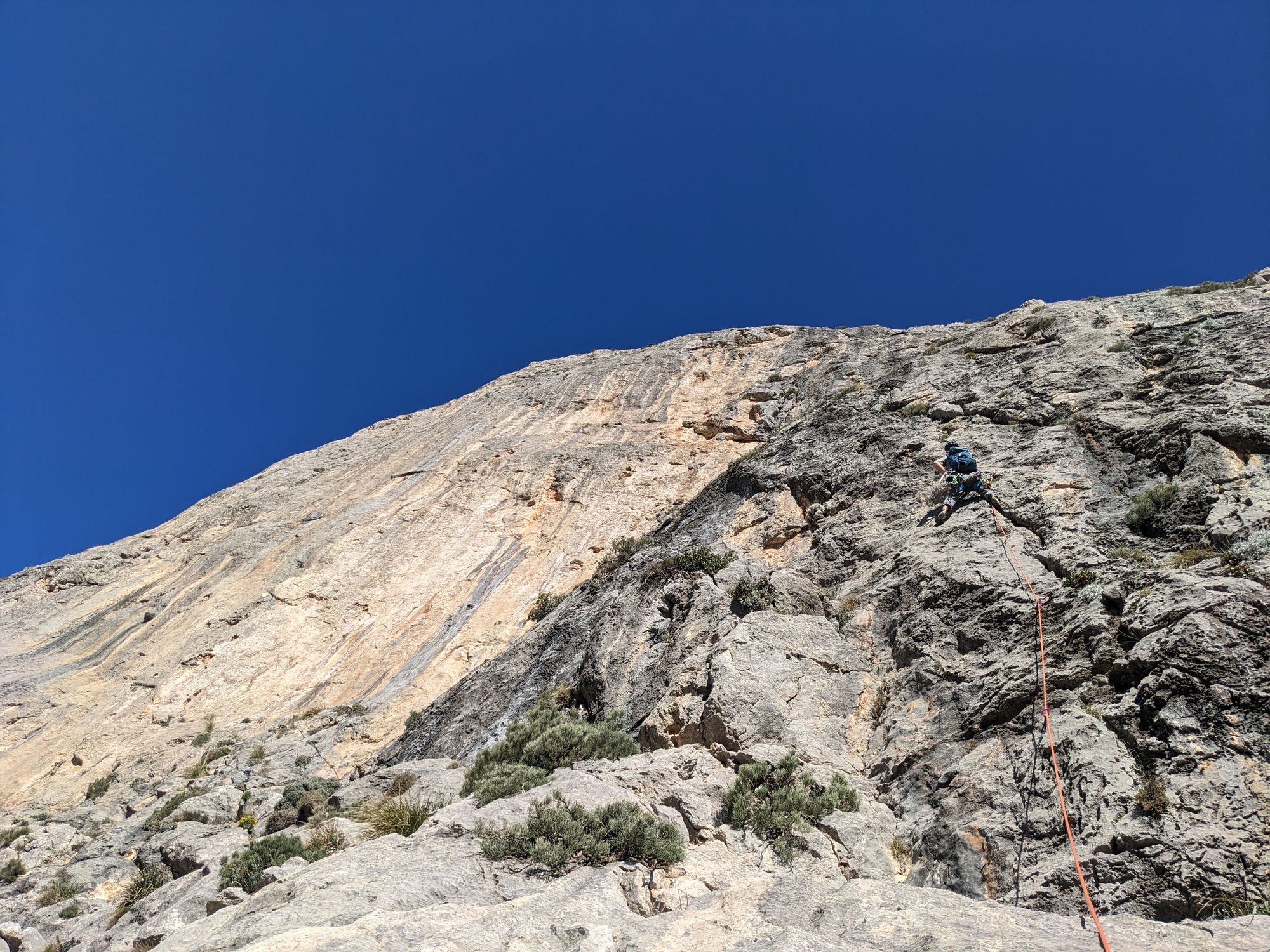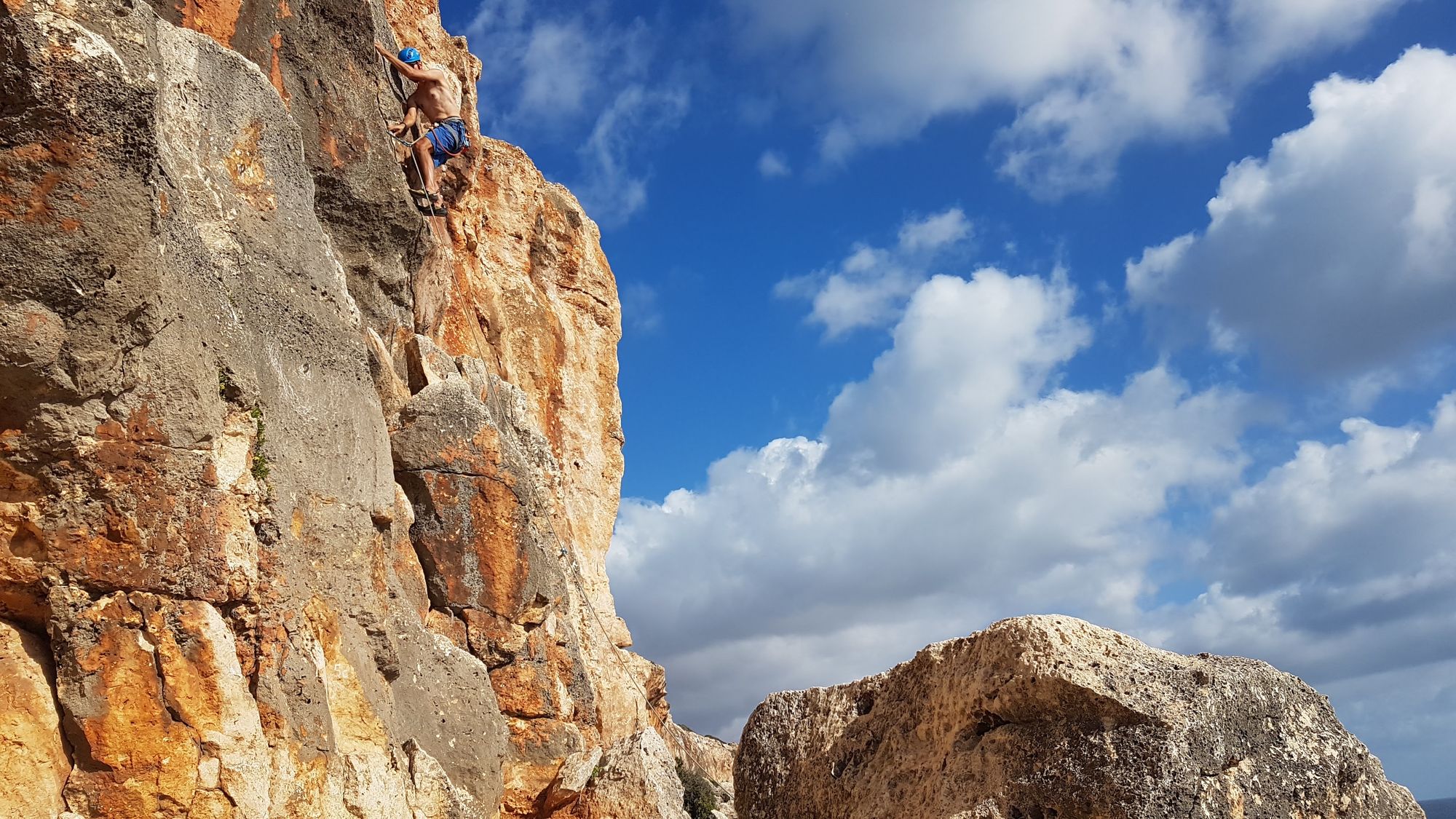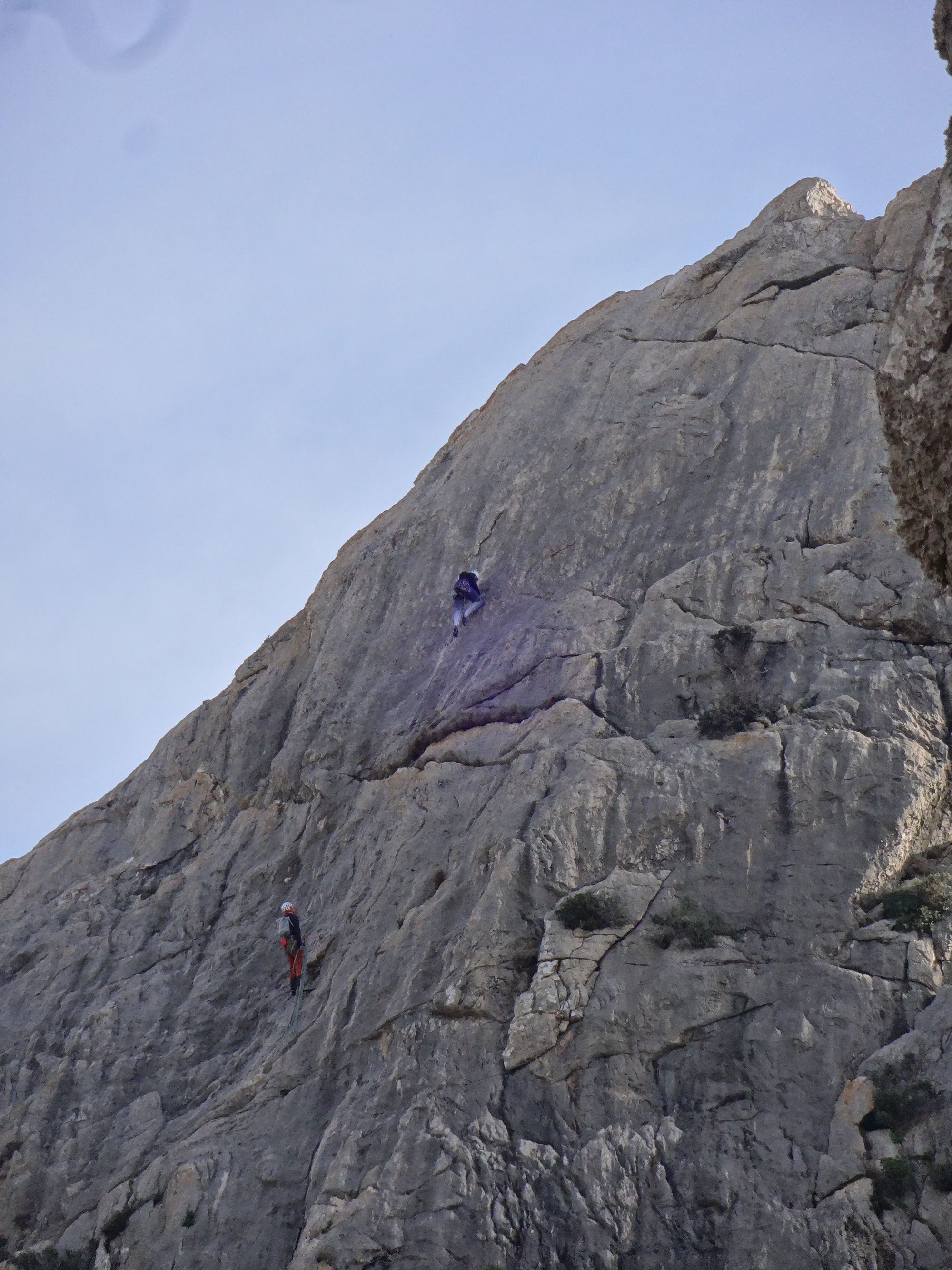Even though all of the climbable rock on the island is limestone, what you will actually encounter is very varied!
A few general observation about the Mallorca rock:

- Grey rock is mostly vertical or positively angled and is hit by water during rain falls. It tends to be very grippy. The rock is structured with smaller holds but can also have huge jugs (washed out by the water runoff). Often the washed out gaps in the rock have been filled with dirt and plants (or even whole trees) grow here.
- Yellow, orange and red rock is mostly overhanging. This rock forms bizarre structures with tons of holes and almost sculpted features that are great to hold on to and use for protection. If the steepness is just right the rain water runs down the overhangs and forms tufas and even stalactites (often at the base of hollows or small caves) - however under these you will also find rock that feels almost like polished marble with very little friction.
Further characteristic differences are found in the rock close to the sea opposed to the rock further inland (especially in the higher Tramuntana mountains):


- Coastal rock is exposed to the salty air and many times even waves. This leads to rain erosion to be less pronounced and the rock having smaller structures. With high waves or strong winds the rock can also be slippery due to general wetness and salt in particular.
- Inland rock is only seeing the rain erosion and tends to form sharper edges and bigger features. Be aware that the grey inland rock is especially rough on the hands. If you are not used to it you better plan for an „off day“ after a few days of climbing. The same is true for climbing shoes: The rubber will get beaten up on this stuff.
The quality of the rock on the island is generally very good and can be trusted most of the time. However there are of course many exceptions to this rule and you need to be careful especially on the routes that are not seeing a lot of repeats.
Some general points:
- In established climbing areas that also host multi pitch climbs the rock has been cleaned and most loose rocks are gone.
- Often the rock at the transition from overhanging to vertical / positively angled rock can be loose.
- In overhanging sections the rock sometimes forms quite delicate features that do not look (or sound) solid. More often than not these small features are good but do not inspire a lot of confidence. Make sure to inspect them well before committing.
Whenever possible we have pointed out the particularly bad (or good) rock quality or specific dangers (for the climbers and potentially people at the base of the climb) in the tours section of this guide.
